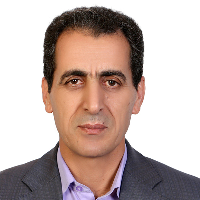Effect of organic and chemical amendments on some nutrients concentration of soil and pistachio leaf at field condition
Author(s):
Article Type:
Research/Original Article (دارای رتبه معتبر)
Abstract:
Introduction
Pistachio is one of the most economical cash crops in Iran that is located in arid and semi-arid regions with low soil organic matter and very harmful ions. The enhancement of the organic matter in sufficient quantity and quality plays an important role in agricultural production and soil sustainable management. The application of organic matter promotes physical, chemical, and microbial soil conditions, such as soil aggregate stability, water holding capacity, productivity, and fertility which are essential, particularly in the arid and semi-arid regions of Iran. Municipal solid waste compost (MSWC) and cow manure are two cheap, available, and effective organic materials that can be used in pistachio orchards to improve soil condition and better root growth and more effective nutrient uptake. Gypsum is a chemical material that can replace Ca with Na, especially in saline and sodic soil and cause Na leaching from the soil profile. Sulfur oxidation and gypsum produce acid in the soil and lead to the reduction in pH and the amending of the soil condition. The present study investigated the effects of two organic matters (MSWC and cow manure), two chemical matters (gypsum and sulfur) on some nutrient concentrations in different soil depths (0-20, 20-40, and 40-60 cm depths) and the leaf of pistachio seedlings at the field condition.
Materials and Methods
A field experiment in a randomized complete block design (split-plot) with three replications was conducted for two years in Izadyaran Company (30 km south of Sirjan, Kerman Province, Iran with hot and dry climates). Treatments were two organic wastes (MSWC and cow manure, 15 Mg ha-1 as the major factor, two chemical amendments (gypsum and sulfur, 10 Mg ha-1) as subplot factor, and soil depths (0-20, 20-40, and 40-60 cm) as the sub-subplot. The organic and chemical matter were poured into the pit of planting and mixed well with soil and a one-year-pistachio seedling was planted (February 2012). In the middle of the summer (August 2013) and at the end of winter (February 2014), plant leaves and soil sampling were done respectively and macro elements’ (Na, K, Ca, Mg, N, and P) concentrations were measured and then statically analyzed with SAS software.
Results and Discussion
MSWC and sulfurs cause the increase of available K in 40-60 cm depth, because of more mobility of K in comparison to other ions. MSW contains K and sulfur through the reduction in pH that leads to MSW decomposing and increases the available K. Sulfur application rises Ca of soil solution more than gypsum because of common ion effect. MSWC and gypsum also enhanced Mg of the soil solution in 20-40 cm depth. Not only MSWC contained Mg but also SO42- solved some parts of solid MgCO3 and increased Mg in soil solution. On the other hand, mineralization of cow manure increased the available P in 20-40 cm depth. None of the treatments were significant on the concentration of soil Na and N. Probably Na was leaching in primary irrigation and mineralized N was quickly absorbed by the plant. Results of this experiment showed that treatments were not significant on the concentration of Na, K, and Mg of pistachio leaves. The application of cow manure increased Ca and P, and cow manure and sulfur increased the N concentration of leaves. The enhanced concentration of elements may be attributed to the increased nutrient levels in cow manure. Sulfur because of sulfuric acid production in soil solution, declined soil pH and led to more nutrient uptake. This phenomenon continuously provides available nutrients in usable form to the plants. These results may be illustrated by the postulated slow release and contiguous storage of nutrients from organic wastes, such as MSWC and cow manure that increased soil nutrient content after a year. Gypsum, with replacing Na with Ca, decreased harmful ions, such as Na and both gypsum and sulfur and because of sulfuric acid production in soil solution, declined soil pH and then led to soil reclamation and more nutrient uptake. The interaction effect of organic and chemical matters’ treatments ,in the same way, can increase some essential nutrients in the soil and plant significantly because of the synergic effect of the organic and chemical soil reclamation.
Conclusion
Results of this study illustrated that it is possible to improve the fertility of saline-sodic soils and plant nutrition with cheap and available organic and chemical materials, such as cow manure and MSWC, gypsum, and sulfur. However, due to the difference in mobility of ions, their concentrations vary in different depths, but with the proper planning, the essential elements can be reached to plants at the right time, especially for a strategic plant like pistachio.Keywords:
Cow manure , Gypsum , MSWC , Pistachio , Sulfur
Language:
Persian
Published:
Journal of Agricultural Engineering, Volume:42 Issue: 1, 2019
Pages:
47 to 59
magiran.com/p2004201
دانلود و مطالعه متن این مقاله با یکی از روشهای زیر امکان پذیر است:
اشتراک شخصی
با عضویت و پرداخت آنلاین حق اشتراک یکساله به مبلغ 1,390,000ريال میتوانید 70 عنوان مطلب دانلود کنید!
اشتراک سازمانی
به کتابخانه دانشگاه یا محل کار خود پیشنهاد کنید تا اشتراک سازمانی این پایگاه را برای دسترسی نامحدود همه کاربران به متن مطالب تهیه نمایند!
توجه!
- حق عضویت دریافتی صرف حمایت از نشریات عضو و نگهداری، تکمیل و توسعه مگیران میشود.
- پرداخت حق اشتراک و دانلود مقالات اجازه بازنشر آن در سایر رسانههای چاپی و دیجیتال را به کاربر نمیدهد.
دسترسی سراسری کاربران دانشگاه پیام نور!
اعضای هیئت علمی و دانشجویان دانشگاه پیام نور در سراسر کشور، در صورت ثبت نام با ایمیل دانشگاهی، تا پایان فروردین ماه 1403 به مقالات سایت دسترسی خواهند داشت!
In order to view content subscription is required
Personal subscription
Subscribe magiran.com for 70 € euros via PayPal and download 70 articles during a year.
Organization subscription
Please contact us to subscribe your university or library for unlimited access!




